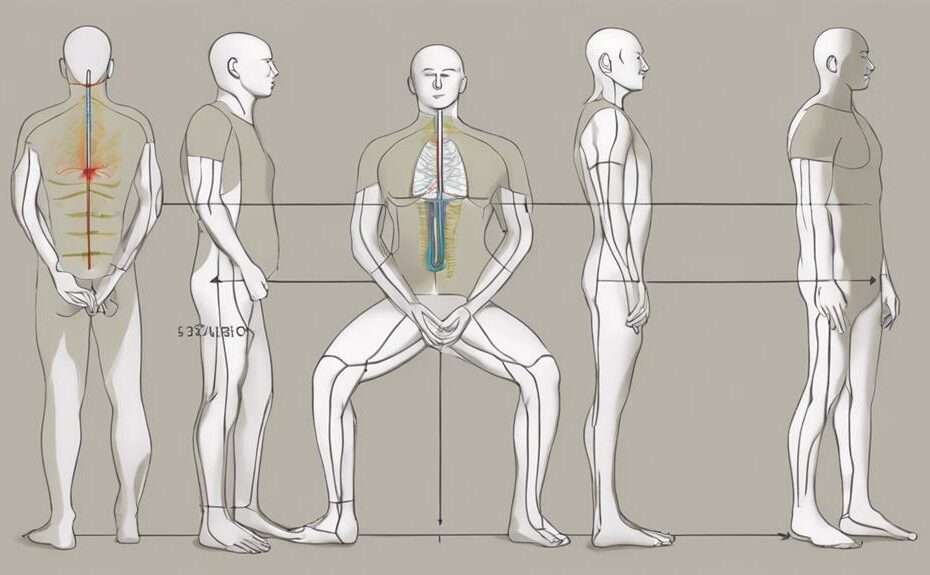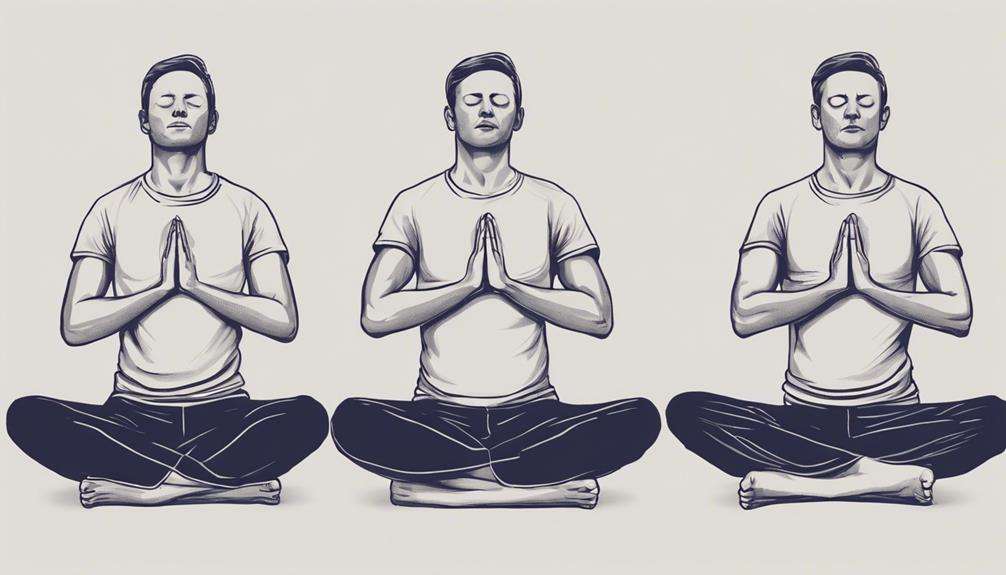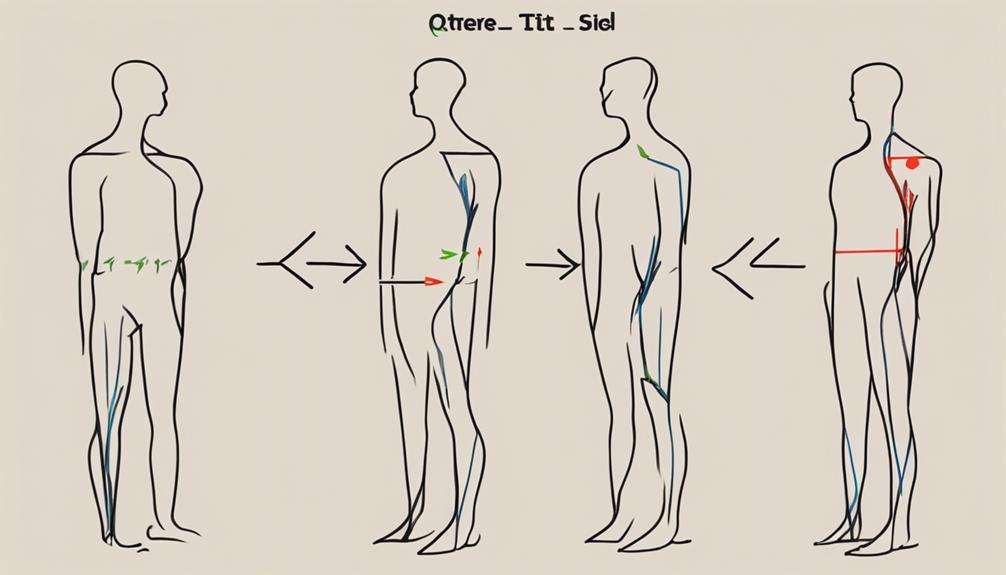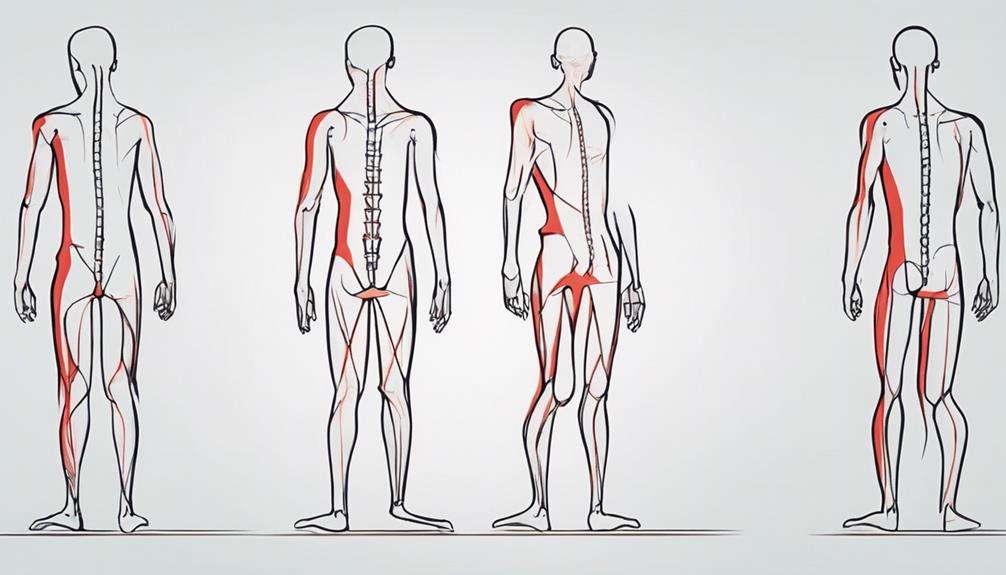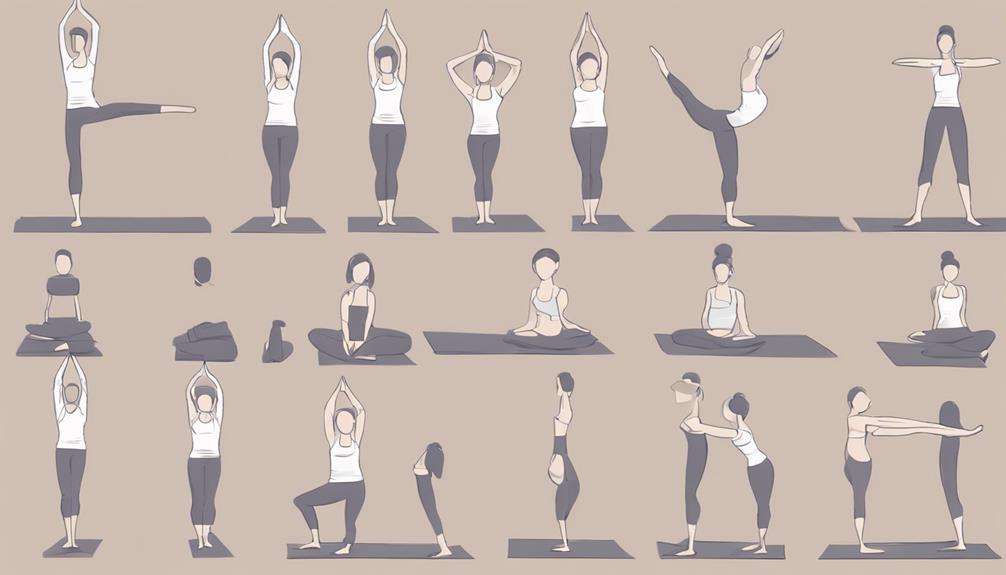When it comes to enhancing your posture, mastering effective breathing techniques is key. By focusing on your breath, you can open a pathway to not only better alignment but also improved overall well-being.
Ready to discover how something as simple as adjusting your breathing patterns can make a significant impact on your posture and daily comfort? Let's explore the transformative power of mindful breathing practices and their lasting benefits on your posture.
Key Takeaways
- Deep breathing strengthens respiratory muscles, promoting better posture and spinal alignment.
- Diaphragmatic breathing techniques provide immediate tension relief and enhance relaxation.
- Proper breathing supports core stability, reducing strain on the back for improved posture.
- Mindful breathing enhances posture awareness, encouraging long-term benefits for overall alignment.
Importance of Breathing for Posture
Breathing plays a significant role in maintaining proper posture by engaging key muscles that support your neck, shoulders, and back. When you take deep breaths, your rib cage expands, allowing your lungs to fill with more air. This deep breathing not only strengthens the muscles involved in respiration but also rearranges tension patterns along the spine, promoting better posture.
The core muscles, including the diaphragm and intercostal muscles between your ribs, are essential for deep breathing and play an important role in supporting your upper body.
Impact of Faulty Breathing on Posture
Faulty breathing can greatly impact your posture by engaging secondary muscles and causing chronic tension, ultimately affecting your overall body alignment and movement efficiency.
When you breathe incorrectly, such as shallow chest breathing instead of using your diaphragm, it can lead to overuse of muscles in the neck, shoulders, and chest. This imbalance can result in a forward head posture, rounded shoulders, and a compressed ribcage, all of which contribute to poor alignment.
Your back muscles may also suffer, becoming weaker due to lack of proper support from the core and respiratory muscles. This weakened core stability can further exacerbate postural issues, creating a cycle of discomfort and misalignment.
By incorporating specific breathing exercises focused on diaphragmatic breathing and rib expansion, you can begin to address these faulty breathing patterns, improve your posture, and enhance overall movement quality.
Strengthening your respiratory muscles and optimizing your breathing mechanics will play an essential role in maintaining better posture and preventing chronic pain.
Immediate Improvements Through Breathing

Addressing your breathing patterns can lead to immediate improvements in tension relief and visible changes in posture alignment. By incorporating diaphragmatic breathing techniques, you can engage your core muscles more effectively, supporting your spine and promoting better posture.
This type of breathing involves the expansion of your ribcage and belly as you inhale, allowing for maximum oxygen intake and improved movement range. As you focus on proper rib movement during breathing, you release tension in your upper body, reducing stress and promoting relaxation.
These quick adjustments in your breathing patterns can have a direct impact on your posture, enhancing alignment and overall mobility. By practicing mindful breathing exercises, you can experience tangible benefits in posture improvement, increased mobility, and reduced upper body tension.
Start integrating these techniques into your daily routine to see immediate enhancements in your posture and overall well-being.
Techniques for Better Breathing
To enhance your breathing for better posture, focus on diaphragmatic breathing benefits, the importance of proper alignment, and rib cage expansion.
By understanding how these techniques work together, you can optimize your lung function, core stability, and overall mobility.
Practice these methods consistently to reap the immediate relief and long-term advantages they offer for improving your posture.
Diaphragmatic Breathing Benefits
Engage your diaphragm and core muscles with diaphragmatic breathing to enhance oxygen flow, improve cognitive function, and support better posture and spinal alignment. This technique not only strengthens the diaphragm and core muscles but also reduces stress levels by triggering the body's relaxation response.
By practicing diaphragmatic breathing, you can improve the function of your respiratory muscles, leading to better lung function and endurance. Consistent use of this breathing method can result in long-term postural improvements and overall well-being.
Proper Alignment Importance
Proper alignment plays an important role in optimizing both your breathing and posture by enabling efficient diaphragm function. When your body is correctly aligned, your core muscles engage, supporting the natural curves of your spine. This alignment allows your chest to expand fully during inhalation, facilitating deep breathing.
Rib Cage Expansion
Improving your breathing by focusing on rib cage expansion is key to enhancing both posture and overall well-being.
Rib cage expansion involves the coordinated effort of the diaphragm and intercostal muscles, allowing for increased lung capacity and improved oxygen intake.
Engaging in deep breathing techniques that promote rib cage mobility not only supports proper posture by activating core and back muscles but also enhances spinal flexibility, reducing stiffness and discomfort.
By prioritizing rib cage expansion, you can prevent shallow breathing patterns that may contribute to postural issues.
Incorporating this practice into your breathing exercises can lead to noticeable improvements in your posture and overall health.
Positional Breathing Exercises for Posture
Wondering how positional breathing exercises can transform your posture and enhance your overall well-being? These exercises target key muscle groups like the diaphragm, core, and back to improve alignment. By engaging these muscles, you can support proper posture and enhance spinal mobility. Positional breathing techniques play a critical role in strengthening postural muscles, helping you maintain better alignment throughout your daily activities.
When you practice positional breathing exercises, you aren't only working on your breathing patterns but also on developing a stronger core to support your posture. These exercises help retrain your body to hold itself in the correct alignment, reducing the strain on your back and improving overall stability. By incorporating these techniques into your routine consistently, you can see significant improvements in your posture and overall well-being. Stay committed to these exercises to experience the long-term benefits of better posture and enhanced spinal mobility.
Benefits of Yoga for Posture

Enhance your posture through the numerous benefits that yoga offers. Yoga strengthens core muscles, improves flexibility, and aligns the spine properly, leading to improved posture.
Specific poses such as Mountain Pose, Tree Pose, and Cobra Pose target posture correction and enhance body awareness. By practicing yoga regularly, you can reduce tension in the back, shoulders, and neck, which contributes to better posture over time.
Additionally, yoga emphasizes deep breathing techniques that support relaxation, stress reduction, and improved posture control. Research indicates that yoga interventions play a significant role in enhancing postural stability and body awareness, particularly in individuals with postural issues.
Meditation for Posture and Well-being
To improve your posture and overall well-being, consider incorporating meditation into your daily routine. Meditation promotes relaxation and mindfulness, which can greatly impact posture by reducing stress and tension in the body. Mindful meditation techniques specifically focus on breathing control, enhancing awareness of posture and alignment. By regularly practicing meditation, you can develop improved body awareness, allowing you to make conscious adjustments for better posture.
One of the key benefits of meditation is its ability to reduce muscle tension, which in turn contributes to a more upright and aligned posture. By incorporating meditation into your daily routines, you can support your overall well-being, including maintaining and enhancing your posture. Making meditation a habit can help you not only reduce stress but also improve your breathing patterns and cultivate a more mindful approach to your posture. Start integrating meditation into your daily schedule to experience these posture and well-being benefits firsthand.
Frequently Asked Questions
What Muscle Help for Better Breathing and to Improve Your Posture?
Engaging your diaphragm and intercostal muscles is essential for better breathing and improved posture. Strengthening these muscles through deep breathing enhances core stability, rib expansion, and spinal alignment, promoting overall well-being and health.
What Is the Most Effective Breathing Technique?
For the most effective breathing technique, focus on diaphragmatic breathing. This method involves belly breathing, rib expansion, and deep breaths to achieve postural alignment. By practicing mindful and resonant breathing, you can enhance posture and overall well-being.
What Are the 5 Main Breathing Techniques?
To improve posture, focus on various breathing techniques like diaphragmatic breathing, box breathing, pursed lips, alternate nostril, deep breathing, belly breathing, and resonant breathing. Engage in these practices regularly for enhanced well-being and posture alignment.
How Do You Fix Bad Posture?
To fix bad posture, start by incorporating chair exercises, neck stretches, yoga poses, core strength routines, desk stretches, standing breaks, and shoulder rolls into your daily routine. These activities strengthen muscles and promote spinal alignment.
Conclusion
To sum up, incorporating effective breathing techniques into your daily routine can greatly improve your posture and overall well-being. By taking deep breaths, engaging underused muscles, and practicing positional breathing exercises, you can reverse the effects of shallow breathing and enhance flexibility.
Remember, Rome wasn't built in a day, so be patient and consistent with your breathing practice to see long-lasting benefits. So, take a deep breath, relax, and enjoy the journey to better posture and health.
